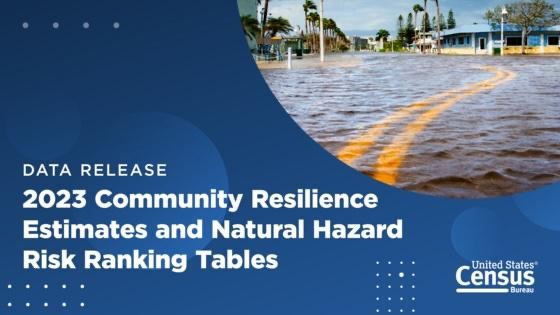
In January, we told you about a federal report that found homeowners’ average insurance premiums per policy increased 8.7% after adjusting for inflation between 2018 and 2022. Those in the top quintile of increases paid 14.7% above what the rate would have been if adjusting for inflation alone. Typically, the biggest increases were in areas with the greatest exposure to weather-related disasters. Thus, if you’re looking at a market’s long-term economic prospects, it makes sense to check out their climate prospects as well.
That’s why it’s worth noting that the U.S. Census Bureau has just released the 2023 Community Resilience Estimates, which highlight socially vulnerable areas in the United States. The data comes with a new interactive tool that makes it possible to identify counties and even census tracts for:
- Winter weather risks (i.e., snow, sleet and freezing rain);
- Flooding risks (i.e., coastal flooding and riverine flooding);
- Hurricane risks;
- Strong wind risks (i.e., damaging winds exceeding 58 mph);
- Wildfire risks; and
- (New) earthquake risks.
The Census Bureau defines “Community Resilience” as the capacity of individuals and households within a community to absorb the external stresses of a disaster.

